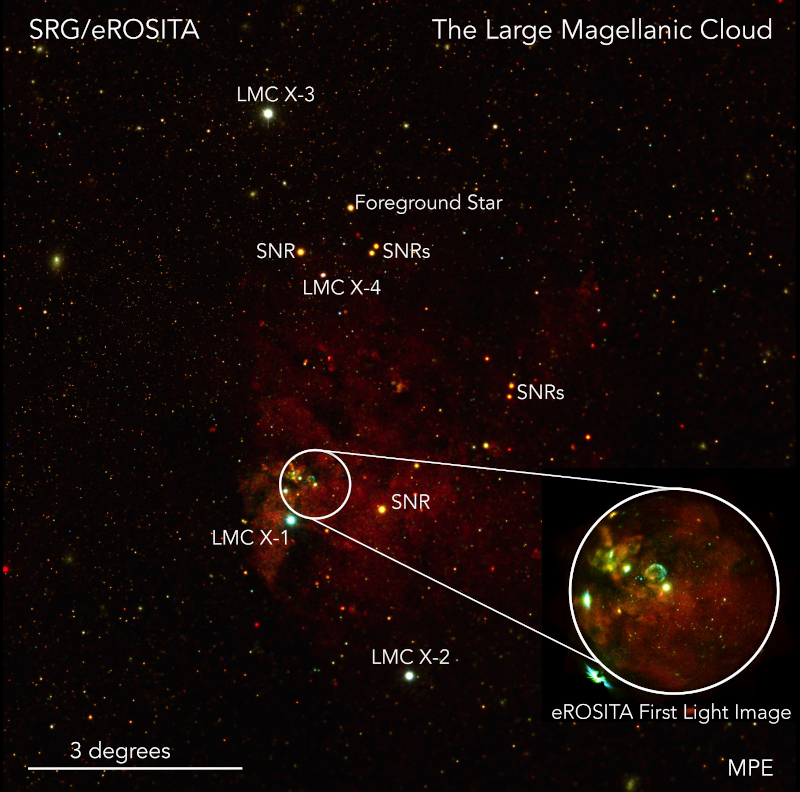
 Credit: Frank Haberl, Chandreyee Maitra (MPE)
Credit: Frank Haberl, Chandreyee Maitra (MPE)
Rediscovering the LMC
Home to the nearest visible supernova in 400 years, the Large Magellanic Cloud is a unique laboratory for the study of all manner of astrophysical objects and processes: star birth and death, the formation and evolution of black holes and neutron stars, as well as the connection between dark matter and the growth of galaxies. The Large Magellanic Cloud (and its little cousin, the Small Magellanic Cloud) were named for famed explorer Ferdinand Magellan, who saw the clouds during his voyage around the globe in the sixteenth century. The LMC is a small galaxy (1 percent of the mass of the Milky Way) about 200,000 lightyears from earth, near enough to allow earth-bound astronomers a clear view of its contents, far enough away to allow comparisons of the brightness of stars and compact objects without significant distance uncertainties. The image above is a new wide-field X-ray image of the LMC taken by the eROSITA telescope on the SRG satellite observatory, in its parking orbit one and a half million miles (255 billionths of a lightyear) from earth. At the distance of the LMC, the 3 degree scale bar corresponds to about 10,000 lightyears. The image highlights the LMC's four brightest X-ray sources, LMC X-1 (a high mass star orbited by a black hole), LMC X-2 (a low mass star orbited by an accreting neutron star), LMC X-3 (another massive star believed to be orbited by a black hole) and LMC X-4 (still another massive star heated by the intense X-ray emission from a compact companion in close orbit). X-ray images of a number of young supernova remnants are also marked. The encircled region shows the "first (X-ray) light" image obtained by eROSITA in its early check out phase soon after launch. eROSITA will scan over the LMC about 7 more times in the next four years, providing a much deeper view of all the fascinating X-ray sources, known and currently unknown, within our neighbor galaxy.
Published: July 6, 2020
<
HEA Dictionary ● Archive
● Search HEAPOW
● Other Languages
● HEAPOW on Facebook
● Download all Images
● Education ● HEAD
>

Each week the HEASARC
brings you new, exciting and beautiful images from X-ray and Gamma ray
astronomy. Check back each week and be sure to check out the HEAPOW archive!
Page Author: Dr. Michael F. Corcoran
Last modified Tuesday, 27-Feb-2024 10:06:43 EST


